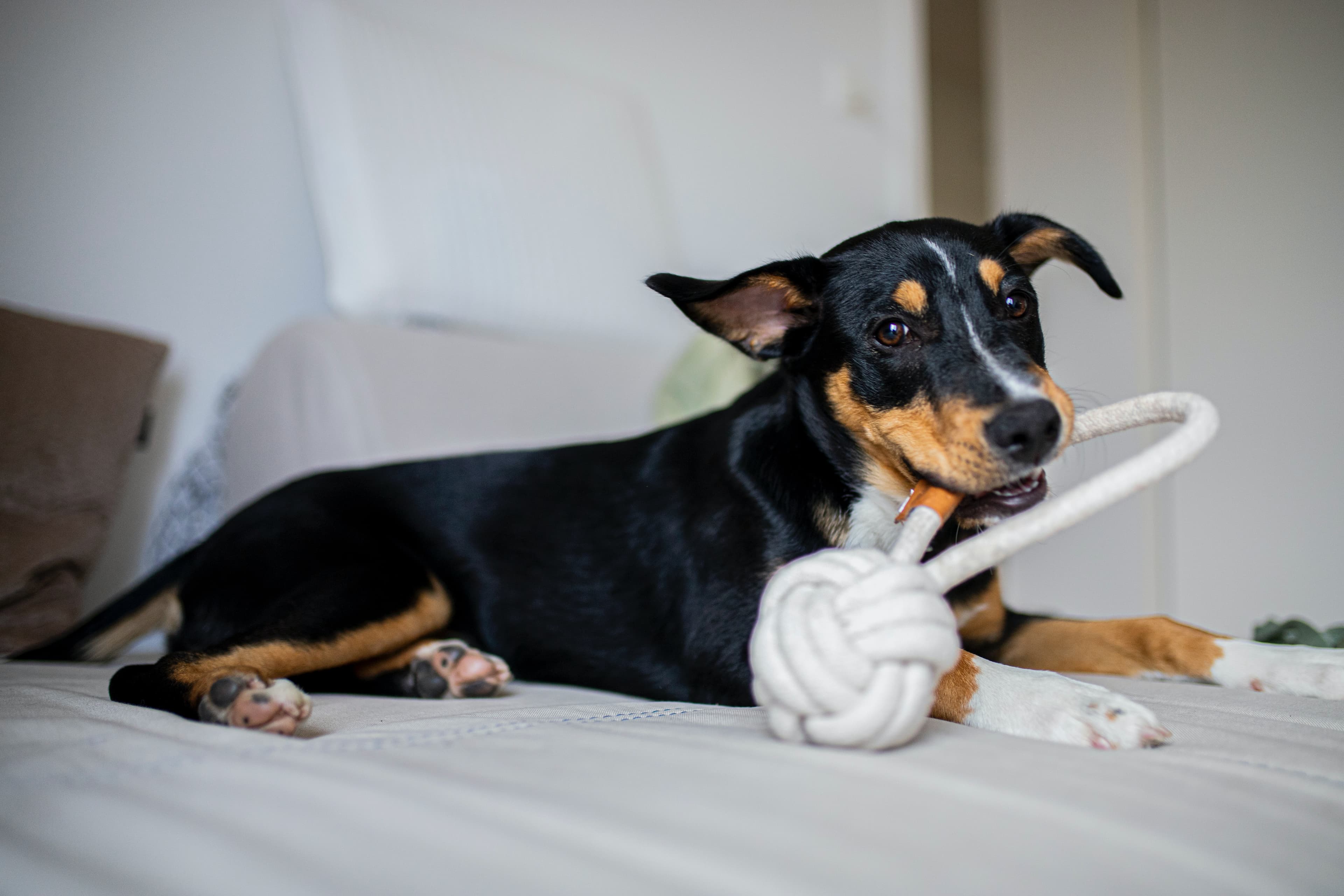How to start running training with your dog
Running is a fun activity to do with your dog. It's both a great form of exercise and great company. Movement is something all dogs need to feel good. That's why we're going to teach you how to introduce running training to your dog.
Introducing running
The most important thing to keep in mind is that all running training should be on the dog's terms. So, it is not the time to set any goals for yourself in the sessions you take with your dog. Depending on how well-trained your dog is, you can introduce running training at different levels. If your dog is untrained and perhaps even overweight, walking in varied terrain may suit you better at this time. If you have a fit dog, your training may be faster. Further down, you will learn how your dog should run and what pace is optimal for his body.
Start your training with fast intervals, and then calm intervals, varying between running at a slow pace and walking. Be out for a maximum of a few miles at first and gradually increase the intervals you run. Further down you will find more information on how your dog should run, this can help you when deciding your pace.
Can all dogs run?
Any healthy dog can join you on the run. This also applies to small breeds. Further down you will find information on how your dog should run, which is of course just as important for a small dog as a large one. However, it is not obvious that all dogs like this form of training. Therefore, it is beneficial to gradually introduce the dog to the task and that you make sure it is always done on the dog's terms.
Puppies should not be trained to run for the first few months. Of course, puppies benefit greatly from exercise, but this should be based on their ability and the pace they choose.
If you have a dog that has had muscle, joint or skeletal problems, it is a good idea to consult your vet before you start running training. It's also important to see a dog physiotherapist regularly to get advice on how best to train with your dog's particular condition. For these dogs, it is important that the training is not rushed and that you are always alert if your dog shows any symptoms. If you notice anything, your dog should take a rest from training.
How should the dog run?
The speed should never be faster than your dog can trot along with you. Trotting is the dog's natural long-distance way of walking and puts the least possible strain on their body. You can gallop for shorter distances, preferably on soft ground, but this should not be seen as your overall pace. Simply slow down if your dog starts galloping.
What equipment should I have?
Canicross, line running, has become a big sport both on the exercise trail and as a form of competition. In this form, your dog runs in a special pulling harness and is attached to you with an expander leash attached to a belt around your waist. In this form, your dog should have a slight pull on the harness and run ahead of you. This form of training is best suited for those dogs that are already in good condition and have been running with you for a while. This is not suitable for puppies, as they should not be subjected to any pulling until they are fully grown.
Equipment for those of you who want to run on an exercise trail include a belt that is tightened around the waist and a slightly longer leash and harness for the dog. If your dog is not going to run as a form of Canicross, the harness does not need to be adapted for the dog to lie onto and pull. Then it is advantageous for the dog to run beside you or diagonally in front.
Things to consider on the trail
Keep in mind that the dog cannot sweat in the same way as we humans. They regulate their body temperature by panting through their mouth, and this is something to be aware of, especially when the temperature is slightly higher. Never run with a dog on a hot day, as overheating can be a life-threatening condition. Always make sure to stop for water breaks if you are going to run a longer distance together.
Asphalt is very hard on a dog's pads, and during the hot summer months the asphalt can become extremely and result in burns. Therefore, think carefully about where you run so that your dog's pads don't risk being worn down. Varied terrain and preferably soft ground is preferable when running with your dog.
Do not exercise your dog just before a run. Always allow a couple of hours between a large meal and a run.






